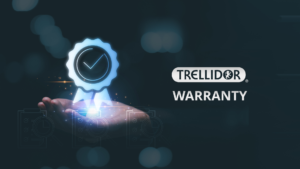With a rapid increase in ATM usage, criminals have also started using this as an opportunity to target users. Therefore, people must be aware of some of the scams that they could fall prey to and how they can protect themselves to avoid becoming victims.
ATMs have become risky as criminals have started to use them to target customers. Though banks are working tirelessly to reduce these ATM-related crimes, it is essential that customers also follow certain measures to ensure that they are protected from these scams. Below are some of the most common scams that customers need to be aware of.
- Card Swapping
This scam is when three criminals target a victim while they make a card transaction at the ATM, and they have their card swopped. The criminals interfere with the victim after they insert the PIN that they need to make a transaction. Usually, one of the criminals will shoulder surf the PIN before the other criminals distract the victim and swap their bank card without realizing it. The victim will not suspect anything as they do not realize that they left the ATM with someone else’s bank card. The criminals will utilize the card to withdraw money or make purchases before the victim becomes aware of what transpired and before they have the opportunity to block their card. - Skimming
Victims of this scam are approached by a person claiming to be an employee at the bank stating that they want to ‘reactivate’ their card by swiping the card through a hand-held device at an ATM. The scam can occur before or after the victim has withdrawn their money. When the scam occurs, there is usually a second or third person who shoulder surfs for the customer’s PIN when they insert it at the ATM.
When the ATM card reader entry slot is damaged, the criminals will approach the customer while struggling to insert their card. They will take the victim’s card away from them and escort them to another ATM to attempt the withdrawal. However, on their way to the other ATM, the criminal gets hold of their card. The criminals will return the original card to the victim, only to later realize that their card was skimmed. - ATM-Mounted Skimming
A skimming device is mounted directly over the ATM card slot, and in most cases, when they are being utilised, they do not interfere with the ATM. It is challenging to detect these devices as they are created to look identical to a card reader slot as they also fit seamlessly over the slot. The skimming device contains a false reader that can acquire magnetic strip data that enables the PIN to be compromised through a spy camera installed within the mold that has the skimming device.
Tips to Protect Yourself Against ATM Scams
Things You Should Do
- When using an ATM, follow the instructions on the screen carefully.
- Pay attention to your surroundings. If you detect any suspicious people or loiters around the vicinity, you should not use the ATM.
- If you are disturbed by other people while making a transaction at an ATM, then it is likely that you may have had your card skimmed. Therefore, you must cancel the transaction immediately and report the incident to your Bank’s Stop Card Toll-Free number, which you can find the number on all ATMs and at the back of your bank card.
- When you have completed a transaction at the ATM, you should leave immediately. Beware of strangers that ask that you return to the ATM to finalise a transaction, as this is how skimming occurs.
Things You Shouldn’t Do
- If you experience difficulty trying to enter your card into the card slot, you should not force it to. Experiencing difficulty while inserting your card is usually a sign that the ATM has been tampered with.
- If the ATM swallows your card, you mustn’t leave the ATM before cancelling your card.
- When using an ATM, never ask anyone to help you, even the security guards or a bank official. Instead, enter the bank and ask for help.
- Avoid using an ATM if the screen layout is unfamiliar to you.
How to Protect Your Pin
- Since your PIN is the key to secure banking, you must keep it confidential. Therefore, when entering your pin, ensure that no one stands too close to you.
- You should memorise your PIN as writing it down or sharing it with other people, including your family member or bank officials, is risky.
- When choosing a PIN, ensure that it cannot be easily guessed and avoid using your date of birth as a PIN.
- When entering your PIN, ensure that no one else can see it. You can do this by using your hand to cover the hand that is punching the numbers even when there is no one around at the ATM, as there could be secret cameras that observe your PIN.
How to Protect Your Money
- Ensure that you set daily withdrawal limits that suit your needs and allow you to protect yourself if your card and PIN were compromised.
- Do not allow your children to draw money using your card as they are vulnerable to criminals.
- When approaching an ATM, ensure that your card is in your hand to avoid opening your wallet, bag or purse while you wait in the queue.
- Always choose ATMs that are well-lit and that you are familiar with where you are safe and visible.
- Ensure that you know what an ATM looks like so it becomes easier to identify any foreign objects that might be attached to it.
- Regularly check your balance and report any discrepancies you notice immediately.
Also, see Emerging COVID-19 Specific Criminal Scams & How to be Viligant.



